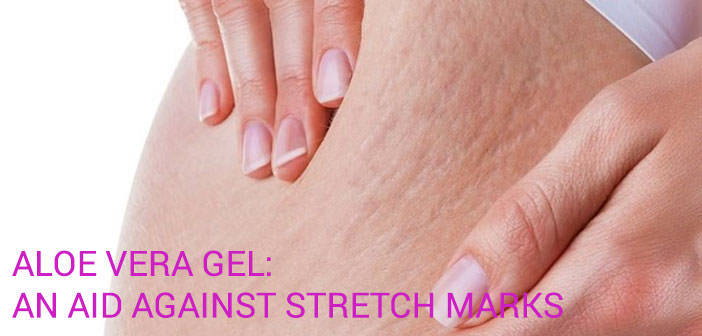Aloe Vera gel: An aid against stretch marks
Aloe Vera is a plant with a thousand properties for health and beauty. The products obtained from this plant help us have healthy, young, and long-lasting skin and prevent imperfections. In this article, we see how to use Aloe to prevent and fight stretch marks.
More elastic skin with Aloe Vera
To prevent and treat stretch marks, it is necessary to use cosmetics that can increase skin elasticity and apply them constantly in critical periods, even several times a day.
Thanks to the high-sugar content, Aloe Vera can help us prevent the formation of stretch marks precisely because the gel extracted from this wonderful plant can make the skin more elastic and hydrating, and nourishing the epidermis.
Aloe Vera gel is also an excellent healing and regenerating agent for the skin. The glycoproteins and amino acids in it multiply the fibroblasts, the dermal cells responsible for collagen and elastin production. To prevent stretch marks, aloe gel is used every day, applying it pure on the skin as a normal moisturizer.
Aloe Vera gel is non-greasy, non-perfuming, non-sticky, and can also be used during pregnancy and breastfeeding. Choose a pure aloe gel, without perfume, which contains only: aloe gel, thickener, eco-bio preservative.
Alternate the use of aloe gel with the oily macerate of aloe against stretch marks, to be applied in the evening before going to sleep with a long massage on the areas to be treated. The oily aloe macerate is useful in preventing stretch marks because it brings to the skin all the benefits of the aloe that we have just seen. In addition, it has an emollient effect on the epidermis.
Both aloe gel and aloe oil macerate are available in herbal medicine. However, to have good results, you need to be constant: neglecting the problem, in the case of stretch marks, means finding yourself having to live with a practically indelible imperfection.
What are stretch marks, and why are they formed?
Stretch marks are streaks of the skin that are very similar to scars. They are an imperfection that mainly affects women but can also affect men: they generally appear on the thighs, hips, and buttocks, but it is not uncommon for them to also form in other areas of the body such as the belly, breast, legs, and arms.
During the initial stages of the formation of stretch marks, these appear reddish or purple and in relief; over time, the tissues heal, and stretch marks turn white. Once the healing process is over, they tend to remain in relief on the belly, thighs, and buttocks and create small grooves on the breast, arms, and inner thigh.
The causes of the formation of stretch marks are mainly genetic. Although they can also appear following sudden weight gains, they are often linked to hormonal imbalances during growth and pregnancy. During these phases of life, fibroblasts slow down collagen and elastin production in response to hormonal levels, making the skin less resistant and more subject to the formation of stretch marks.
It is possible to avoid the appearance of stretch marks by preventing their formation and intervening promptly in case we notice red lines on the skin.

